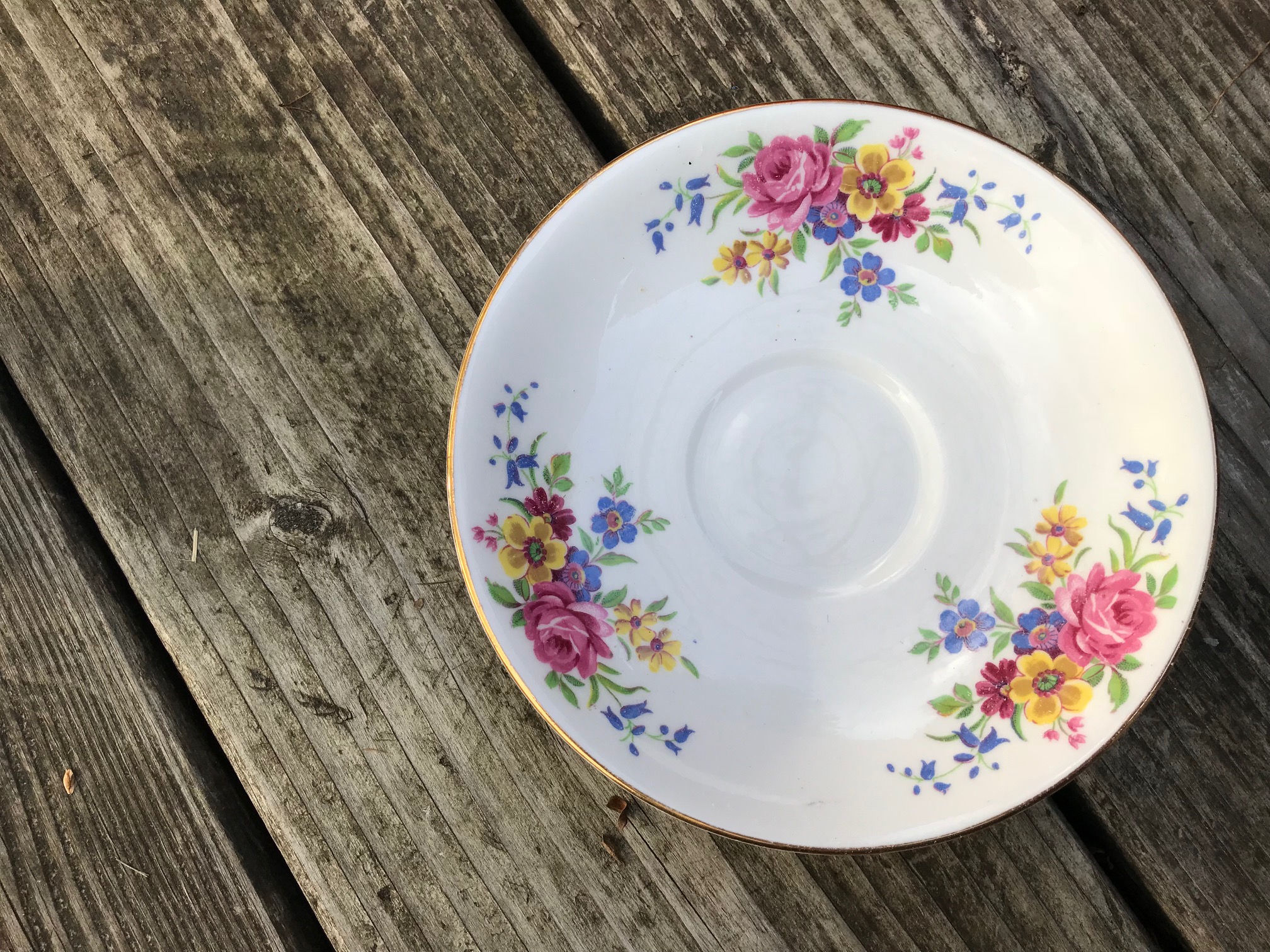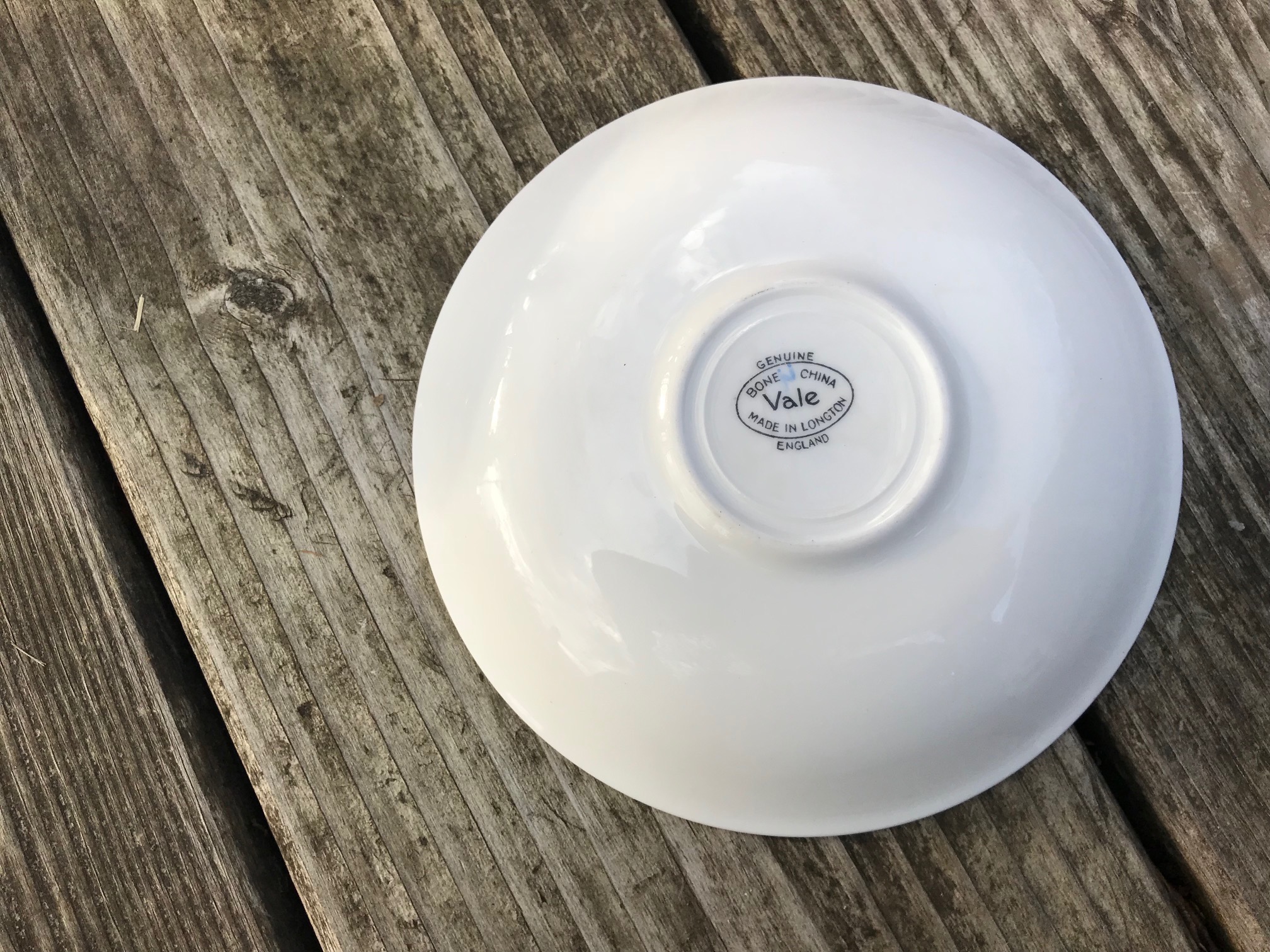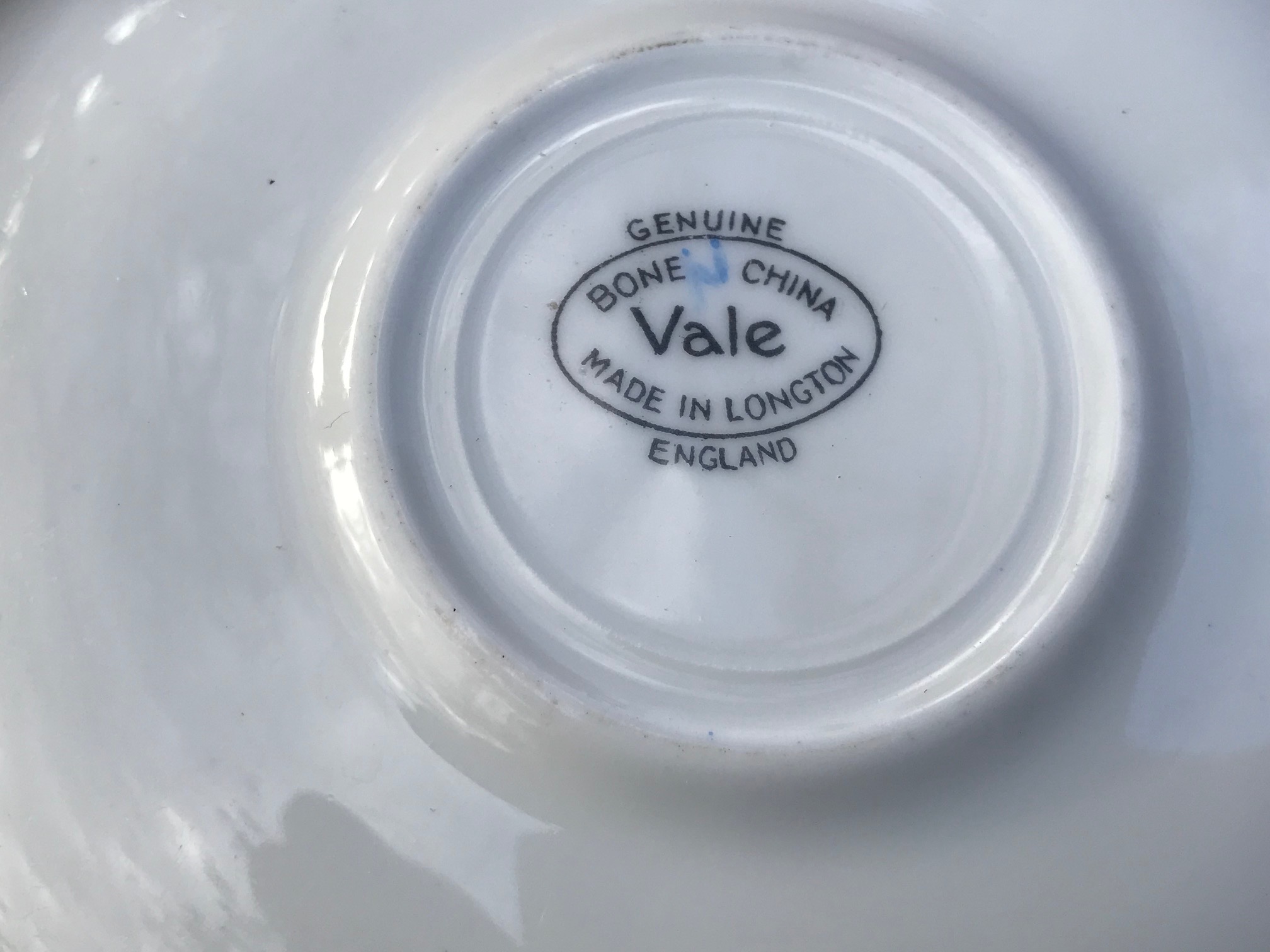Vale Saucer Made in Longton England: 54,600 ppm Lead. 90 ppm Lead is considered unsafe in items used by kids.
Please click the link for help finding safer choices for your holiday table.
Vale Saucer Made in Longton, England.
Floral Pattern (pattern name not marked on piece).
When tested with an XRF instrument, this saucer had the following readings:
- Lead (Pb): 54,600 +/- 1,600 ppm
- Mercury (Hg): Negative/Non-Detect
- Arsenic (As): Negative/Non-Detect
- Cadmium (Cd): Negative/Non-Detect
- Barium (Ba): Negative/Non-Detect
- Chromium (Cr): Negative/Non-Detect
- Antimony (Sb): Negative/Non-Detect
- Selenium (Se): Negative/Non-Detect
- Zinc (Zn): 143 +/- 37 ppm
- Copper (Cu): 165 +/- 57 ppm
- Iron (Fe): 1,368 +/- 226 ppm
- Vanadium (V): 95 +/- 41 ppm
- Titanium (Ti): 261 +/- 65 ppm
To learn more about XRF Testing, Click Here.
For context: when testing is done with an XRF instrument, the amount of lead that is considered toxic in a newly manufactured item made today and intended for use by children is anything 90 ppm Lead or higher in the glaze or coating, and anything 100 ppm Lead or higher in the substrate*.
High Lead levels found in a piece like this are generally the levels of Lead found in the glaze (the coating), not the substrate (the clay.)
*There is currently no comparable regulatory action level or limit for XRF detectable levels of Lead found in dishware (vintage or new.)
To learn more about why lead in vintage dishware may be a concern, please Click Here.
To see the #LeadFree dishes I use in my home, click here.
For more #SaferChoices for your family, click here.
To see more vintage dishes that I have tested for Lead, Click Here.
As always, thank you for reading and for sharing my posts.
Please let me know if you have any questions.
Tamara Rubin
#LeadSafeMama
To make a contribution in support of my independent consumer goods testing and lead poisoning prevention advocacy work, click here. Thank you!
Never Miss an Important Article Again!
Join our Email List





